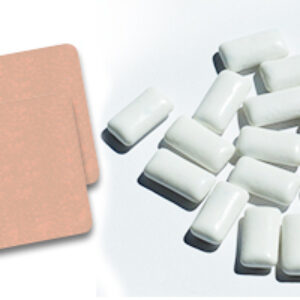
A Provider’s Role in Curbing Cravings
‘I will prevent disease whenever I can, for prevention is preferable to cure.’ Used in many medical schools today, many providers subscribe to this core tenet of practicing medicine. And the commonly-acknowledged, low hanging fruit in terms of prevention? Quitting smoking.
Patients who stop smoking greatly reduce their risk for disease and early death. Indeed, quitting smoking is the best thing a person can do for their health. But, also well known among providers and patients alike—quitting smoking isn’t easy.
There is hope though. When working with a patient who is trying to quit smoking, providers can use the 5 As (Ask, Advise, Assess, Assist, and Arrange). Having cessation resources on hand is paramount to the ‘Assist’ and ‘Arrange’ steps. Providers can rely on Spokane Regional Health District’s (SRHD’s) resource for tobacco cessation that can be found at srhd.org/topics/cessation.asp
Next hurdle? What should a provider do after counseling a patient and providing resources, but the patient is struggling in their plan to quit? Providers can help by coaching patients through cravings, using proven strategies to help see them through need. Patients can benefit from many of the tips offered by smokefree.gov and providers can be the conduit.
Specific to cravings, as a provider trying to help, the first step is to identify a patient’s triggers for lighting up. Common triggers are feeling stressed or down, talking on the phone, drinking alcohol, having sex, or seeing someone else smoke. Once a patient knows their triggers, they can work to avoid these types of situations. When avoiding a trigger isn’t possible, or when a craving is already present, patients can try these techniques to avoid lighting up:
- Call someone who can help you. Calling 1-800-QUIT-NOW will connect a patient with someone who can help counsel them through their quit attempt. Patients should also be encouraged to contact a friend or someone they trust who can support and encourage them.
- Wait 15 minutes – a typical craving lasts between 5-10 minutes.
- Take a walk or get some exercise - physical activity can help boost energy and overcome cravings.
- Review their personalized quit plan and the reason they are quitting tobacco.
- Go to a smoke-free area where people are not allowed to smoke.
- Calculate financial savings from quitting and decide what to buy with the savings.
- Chew gum or eat a hard candy.
- Drink water.
- Do something else entirely – when a craving comes on, change what you are doing altogether.
- Take deep breaths and try to relax.
Providers should remind their patients that quitting can take practice. If they smoke during a craving, they shouldn’t give up on their quit plan. Encourage patients to immediately get back to their quit plan until they can quit for good.
If you have questions about how SRHD is working to decrease tobacco use, contact the Tobacco, Vaping Device and Marijuana Prevention coordinator by email at pmcgowan@srhd.org or call (509) 324-1504.
